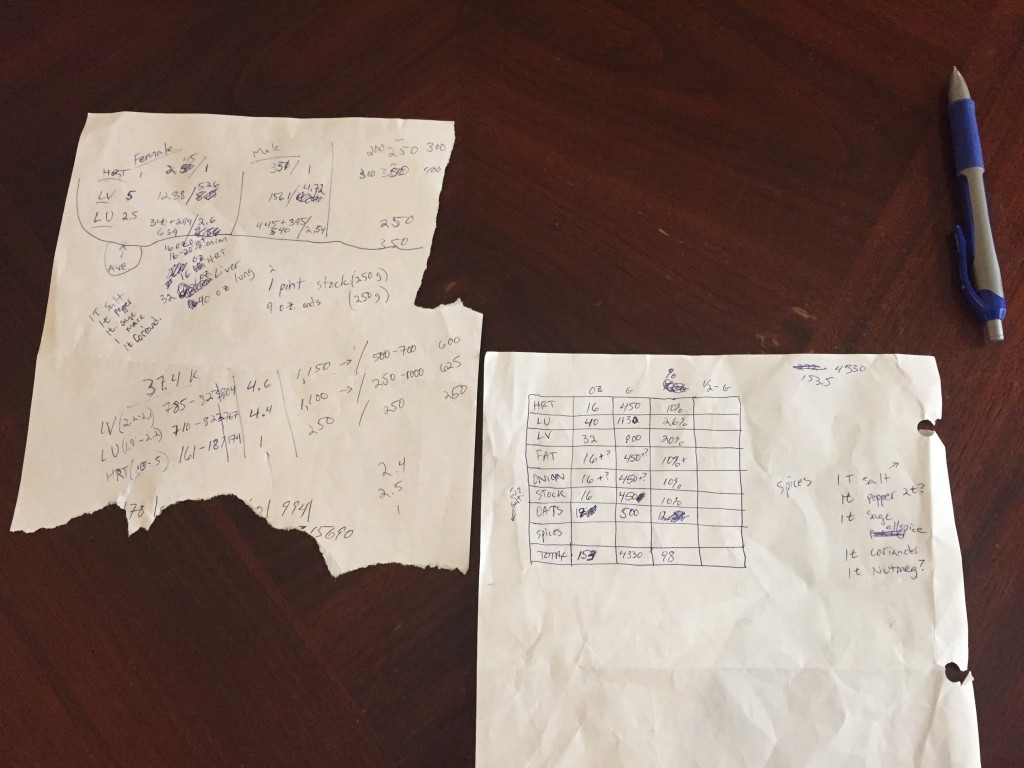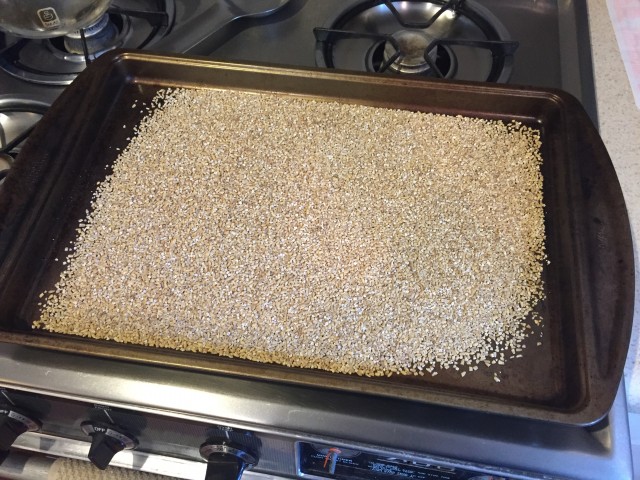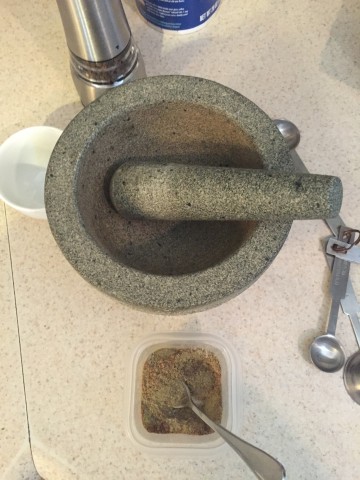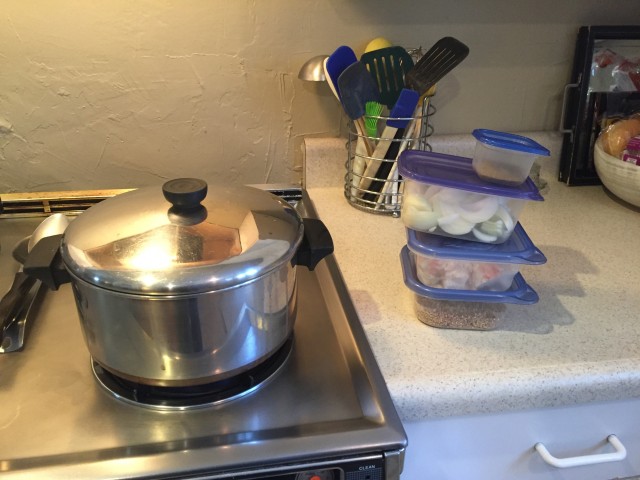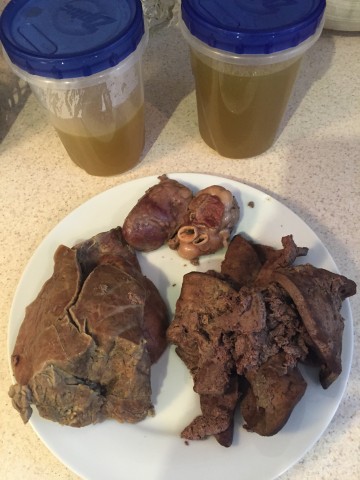Creating A Haggis
So here goes! I’ll spell out most every step and if you want the actual recipe, I’m happy to send it along once it’s finalized. If you want to zoom into any of the photos to see all the juicy details, simply click on the image for the full-sized version.
My scribbled research and first notes at a recipe:
You see, since I didn’t have an actual sheep’s pluck to start with, I had to try and figure out all the ratios of ingredients since all the haggis recipes available simply mention what foods to combine but aren’t that good at defining actual amounts. This took a little while to determine since even knowing what an average sheep lung or liver wieghs is info that I couldn’t find or was hard to find on the web. What you see in this picture are the various estimates I came across and comparisons to human organ weights – info that is much more available. The range was huge, but I narrowed it down well enough to keep going.
The first step is to toast the oats. Supposedly it adds to the flavor – who knows if this is actually the case, but whatever, do as the locals do. These are pinhead oats, as they’re called in Scotland, or steel-cut oats or Irish oatmeal here. I thought it was interesting that to make a Scottish pudding dish, I would be using “Irish oatmeal,” while the type of oats that go into Irish white pudding are called, “Scottish oatmeal.”
Here’s the meat. It was fascinating to work with fresh lung and took me back to my training as a doctor in the anatomy labs, but this was much better than the dead human bodies laying in cold steel tanks. Sorry – that was a little graphic, but it’s the truth!
Personally I think there’s something very humbling and special to holding an animal’s entire organ in your hand, such as the lamb heart. I felt the same way when I held the hearts and livers of a pig when I made the faggots last year. This is esppecially the case due to my career and the symbolic meaning and significance the heart plays. From the perspective of food and my experience of eating heart, it’s simply a tough meat from endless use, like a tough piece of skeletal muscle meat such as a chuck roast. But when you look at the reality of these organs from the perspective of our health and the role they play in our lives, it’s a whole different story. Also, having a personal connection to the person who knew the cow and gave me the lung made holding the lung special too and it was nice to make these connections… Almost like a small spiritual experience; something I’d highly recommend for anyone who cares about their food in more ways than simply things to fill the belly!
Everything is then put into a big pot and simmered for a couple of hours. In the butcher world, lungs are referred to as lights, which makes perfect sense when you think of the fact that the lungs fill up with air which makes them light. And they certainly do puff up on their own, floating in the water on top of everything else.
This is one of my favorite kitchen items to use. It’s an ancient tool unchanged form its origins and there’s no better way to grind fresh spices and herbs – the mortise and pestle. I love the bright smell of fresh ground pepper, just as long as I don’t stick my nose in too close for a sniff!
Here’s everything prepared while the meat is cooking away. From top to bottom: spices, onions, suet, oats. I’m a stickler for a clean and organized workspace. As the kids will quickly tell you from the cooking lessons I’ve given them, “A clean workspace means happy poops!”
Here’s the meat after being being cooked to a tender state, clockwise from the top of the plate: heart, liver, lung, and two containers of stock to go into the mix for added moisture later:

